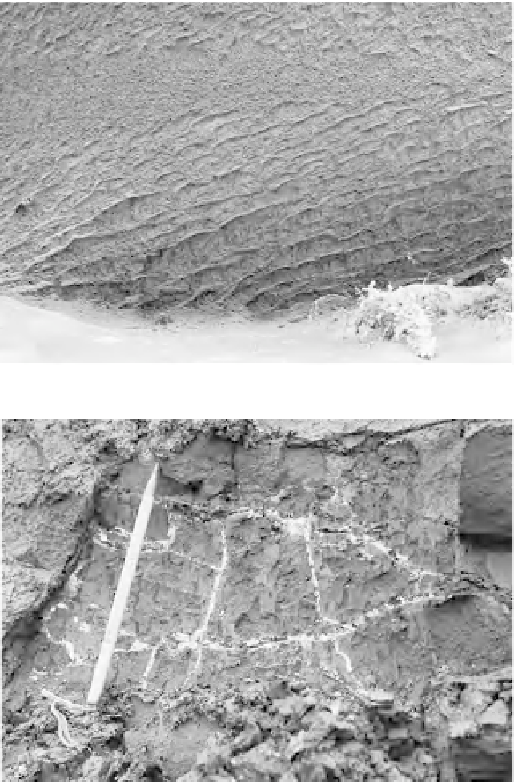Geology Reference
In-Depth Information
7.2.2. Segregated Ice
Segregated ice is a broad term for soil with high ice content. Segregated ice forms in a
variety of materials but water-saturated fi ne-grained sediments are especially suitable.
Usually, ice lenses are visible to the naked eye; they vary in thickness from layers a few
millimeters thick to massive ice bodies, sometimes tens of meters thick. In the case of
closed-system freezing, as in the freezing of a sub-lake talik, lenses may be inclined to
refl ect the position of the freezing plane (Figure 7.2A). In theory, segregated ice can be
distinguished from intrusive ice (see below) on account of the relative purity of the latter,
and the stratifi cation and presence of soil particles and air bubbles oriented normal to the
freezing plane in the former. However, when dealing with massive icy bodies, this distinc-
tion is often diffi cult to make.
(A)
(B)
Figure 7.2.
Examples of cryostructures in frozen ground. (A) Inclined segregated ice lenses,
30-80cm long and 5-10cm thick, formed by subaqueous syngenetic freezing of glaciolacustrine
silty clay near Mayo, Yukon Territory, Canada. (B) Network of reticulate vein ice formed in silty
clay diamicton, Pelly Island, Pleistocene Mackenzie Delta, NWT, Canada.

